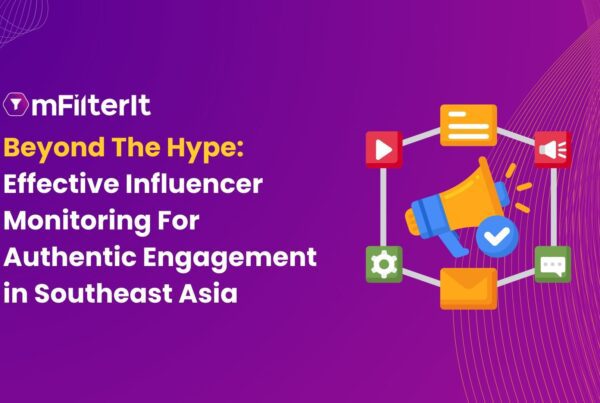The fascinating world of advertising is witnessing the rise of contextual advertising. Now, advertisers are reaching out to a more relevant audience with precise targeting and ad contextual relevancy. Relevant ad placement reaches the audience interested and views similar types of content.
Let’s explore how the contextual ad landscape in the USA
Contextual advertising in the USA ad Market
The United States is the largest contextual advertising market worldwide. According to Statista, in 2023, contextual advertising spending was estimated at $227.38 billion on the global level. The ad spends are expected to further beyond two folds rise by 2030 approximately $562.1 billion.
The use of AI and machine learning algorithms has led to wider acceptance of contextual advertising that improves targeting and upgrades ad placements. Huge amounts of data including content-based context, and user behavior are monitored to provide custom-made and relevant advertisements.
Contextual advertising is witnessing a rise in demand for privacy-focused targeting solutions due to increased concerns over data privacy and regulatory scrutiny. Instead, depending on invasive data-collecting techniques, and a cookie-less ad ecosystem, advertisers are investigating alternate approaches to audience targeting.
Benefits of Contextual Advertising
Navigating the evolving landscape requires contextual ad targeting. Here are some perks of contextual advertising:
Data Privacy Compliance
Contextual ads are an alternative to behavioral ads that need to comply with laws regarding data privacy, including the CCPA and GDPR. Moreover, contextual ads don’t entirely depend on cookies or user-specific data, it is easier to deal with privacy requirements. It respects the privacy of users’ data and ensures your ad reaches a genuine and relevant audience.
Targeting Desired Audience
Another advantage is that it accurately targets the audience based on their interaction with the desired content. Depending on the interests and needs of the users, contextual ads help marketers by monitoring the context of a webpage, app, or other digital platforms to regulate their advertisements.
Enhanced User Experiences
The user experience is highly influenced by contextual advertising, rather than providing consumers with generic advertisements. They deliver ads that perfectly blend with the surrounding context, which results in a seamless experience.
Impact of Contextual Advertising
Contextually relevant ad placement ensures more engagement and efficient ad performance with better returns on investments.
Market Expansion and Economic Effects
The increasing dependency on digital content and the developments in AI and machine learning which improve the efficiency of contextual ad placements push forward the growth in the US market which has a major impact on the US. digital advertising business, which is among the biggest in the world.
Improved Interaction with Customers
Contextual advertising increases consumer engagement by displaying appropriate advertisements based on the content that customers are viewing. Based on the relevancy, it enables the rise in click-through and conversion rates. For instance, instead of a makeup brand ad, a protein shake advertisement on a fitness blog is more likely to attract readers’ attention and increase engagement.
ROI and Cost-Efficiency
In comparison to other digital advertising formats that entirely depend on user data, contextual advertising is more affordable. Advertisers can gain a higher return on investment (ROI) and accurate targeting at a much lesser cost by concentrating on context rather than custom-made user profiles.
Brand safety and relevancy in Contextual advertising
Contextual Brand Safety refers to strategies and technologies used to ensure that advertisements appear in appropriate and relevant content environments, thereby protecting the brand reputation. This approach focuses on analyzing the context of web pages and digital content to avoid placing ads next to harmful, controversial, or inappropriate material.

Contextual Brand Relevancy enables AI-based contextual level targeting that focuses on elements, logos, faces, keywords, objects, sentiments, and more for brands to choose the right ads at the right place. We provide custom targeting and exclusion themes and accurate detection of unsafe content across a comprehensive set of brand safety categories as per the GARM guidelines.
For Instance, your ad campaign is about a man’s fashion brand featuring offers, promotion, and image of celebrity actor Ranveer Singh. This sort of ad needs to feature videos that talk about fashion or feature the same celebrity. Identifying such relevant videos will help reach an audience with similar interests. By using PACE Brand Relevancy, you can identify the text, logo, element, and keyword using AI-ML tech and keyword search & analysis capabilities to fetch URLs of contextually relevant videos for ad placement.
Conclusion
Contextual advertising is not just a trend but a fundamental shift. It ensures that ad creative and placements align with the brand’s vision and help reach its target audiences in meaningful and effective ways. Brand relevancy solution empowered with advanced AI-based contextual level targeting identifies elements, logos, faces, keywords, objects, sentiments, and more for brands to choose the relevant content for ad placement across advertising platforms.
Get in Touch with us to learn more about contextual ads.





